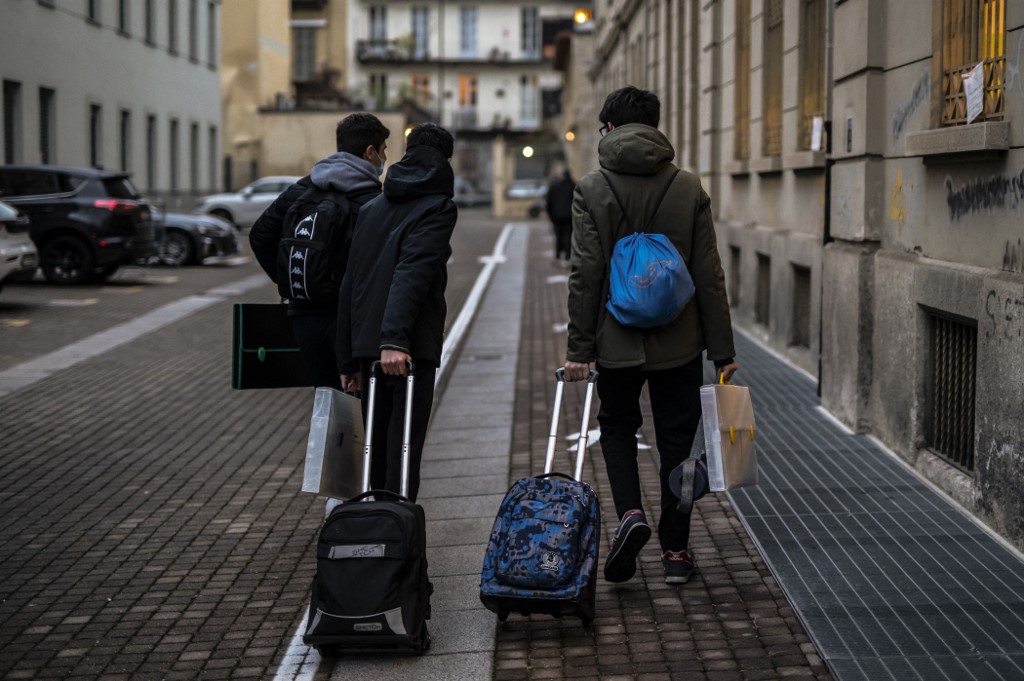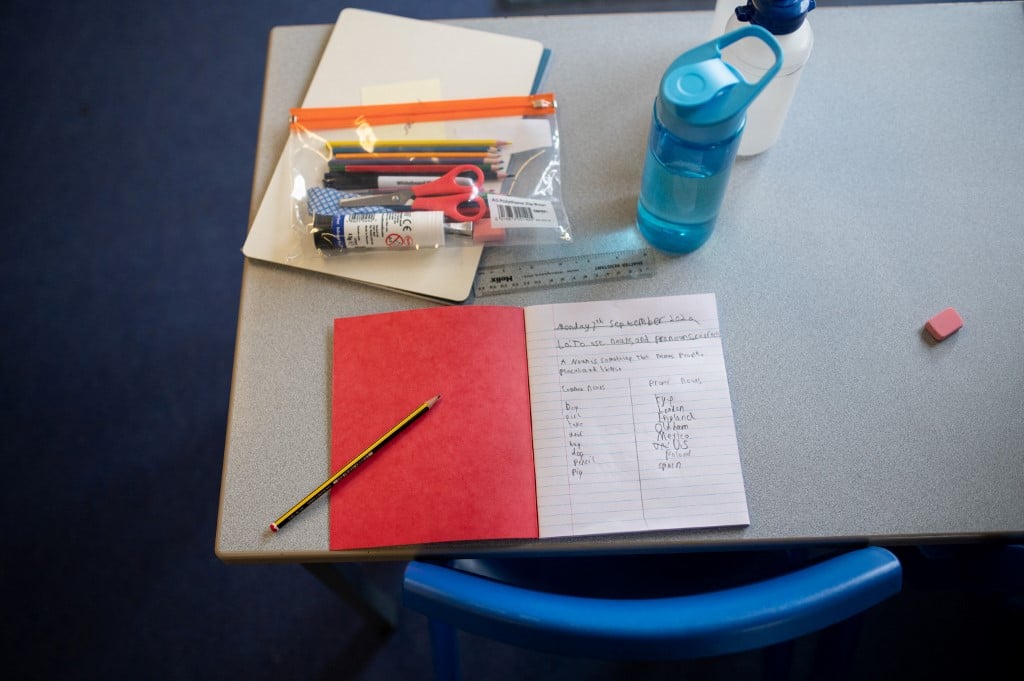Back to school in Italy: how much will it cost, and how can you save money?

With Italy’s schools reopening in September, parents are beginning the annual rush to stock up on essential supplies. But new figures reveal families will have to shell out more this year.
As the summer holidays draw to a close, Italian pupils are preparing to file back into the classroom for the start of the 2023/2024 school year.
For those who aren’t too familiar with the Italian education system, all public schools are managed by regional authorities, meaning return dates vary by region.
For instance, this time around, back-to-school dates will range from September 5th to September 15th, with children in the Bolzano province being the first back in front of the blackboard.
But regardless of the dates pupils will be back at their desks, the purchase of school supplies and textbooks is going to deal many families a harder economic blow this year.

Backpacks are the most expensive item in the back-to-school shopping list, with some branded articles going for over 200 euros. Photo by MARCO BERTORELLO / AFP
According to estimates from Italian consumer association Assoutenti, the prices of school supplies (backpacks, notebooks, pencil cases, stationery, etc.) have increased by a whopping 9.2 percent compared to last year, while textbook prices have seen year-on-year upticks ranging from 8 to ten percent.
READ ALSO: 'Very underfunded, very strict': What readers think of Italy's schools
The spike, Assoutenti says, is attributable to increases in the prices of raw materials and higher production costs.
So how much should Italian families prepare to shell out?
According to Assoutenti, expenses for school supplies alone may range from 500 to 600 euros per student.
As usual, the most expensive item on the back-to-school list is the backpack, with the price of some brand-name articles currently exceeding 200 euros.
But significant expenses are also required for pencil cases or pouches (branded items may go for as much as 60 or 70 euros), school diaries (around 50 euros for the most sought-after brands) and technical items (i.e., set squares and triangles, compasses, goniometers, etc.).
On top of the above-mentioned school supplies, families will also have to pay for textbooks.
While elementary school textbooks are supplied free of charge across the entire country, costs for middle school (scuola media) or high school (scuola superiore) textbooks generally fall between 300 and 600 euros, with prices varying according to the year and school children happen to be in.
READ ALSO: OPINION: Are Italy's international schools really 'international'?
All in all then, Assoutenti estimates that the purchase of school supplies and textbooks might set Italian families back over 1,200 euros per student this year.
But, as the prospect of the back-to-school financial blow gives rise to justified concern among parents, consumer groups have already provided families with some useful advice on how to save up on both supplies and textbooks.

Italian consumer groups have advised families to avoid branded items when it comes to purchasing school supplies. Photo by OLI SCARFF / AFP
How to save money on school supplies
- Avoid branded items. Children are easily influenced by TV and/or online ads and might push to get the most popular and fashionable articles on the market. However, off-brand items generally have the same features and durability as their more well-known counterparts and might go for 40 percent less.
- Buy from a local supermarket rather than a stationery shop. At this time of the year, many supermarket chains offer very favourable deals on school kits, with prices being sometimes 30 percent lower than in specialist shops.
- Don’t buy everything at once. Any item that is not immediately necessary can be bought at a later stage.
- Wait for teachers’ guidelines, especially when it comes to buying material for art or geometry classes. Knowing exactly what items are required will save you from spending money on wrong or unnecessary articles.
How to save money on textbooks
- Buy second-hand textbooks. Purchasing libri usati might allow you to save up to 50 percent on school books. However, it’s usually best to check the state of the items – especially their exercise pages – prior to buying. Also, keep in mind that past editions might no longer be accepted.
- Shop online or in supermarkets. Some supermarkets and online marketplaces sell textbooks at favourable prices, with discounts usually ranging between 10 and 20 percent.
- Buy digital textbooks. Again, not all schools allow this but in some institutes families have the option to buy the required set of textbooks in digital form. Students can then access the books via a pc, tablet or e-reader.
- Loan textbooks directly from the school. Not all institutes do this but some allow for various forms of comodato d’uso whereby families can loan textbooks for the entire length of the school year and then return them when classes end in June.
Comments
See Also
As the summer holidays draw to a close, Italian pupils are preparing to file back into the classroom for the start of the 2023/2024 school year.
For those who aren’t too familiar with the Italian education system, all public schools are managed by regional authorities, meaning return dates vary by region.
For instance, this time around, back-to-school dates will range from September 5th to September 15th, with children in the Bolzano province being the first back in front of the blackboard.
But regardless of the dates pupils will be back at their desks, the purchase of school supplies and textbooks is going to deal many families a harder economic blow this year.

According to estimates from Italian consumer association Assoutenti, the prices of school supplies (backpacks, notebooks, pencil cases, stationery, etc.) have increased by a whopping 9.2 percent compared to last year, while textbook prices have seen year-on-year upticks ranging from 8 to ten percent.
READ ALSO: 'Very underfunded, very strict': What readers think of Italy's schools
The spike, Assoutenti says, is attributable to increases in the prices of raw materials and higher production costs.
So how much should Italian families prepare to shell out?
According to Assoutenti, expenses for school supplies alone may range from 500 to 600 euros per student.
As usual, the most expensive item on the back-to-school list is the backpack, with the price of some brand-name articles currently exceeding 200 euros.
But significant expenses are also required for pencil cases or pouches (branded items may go for as much as 60 or 70 euros), school diaries (around 50 euros for the most sought-after brands) and technical items (i.e., set squares and triangles, compasses, goniometers, etc.).
On top of the above-mentioned school supplies, families will also have to pay for textbooks.
While elementary school textbooks are supplied free of charge across the entire country, costs for middle school (scuola media) or high school (scuola superiore) textbooks generally fall between 300 and 600 euros, with prices varying according to the year and school children happen to be in.
READ ALSO: OPINION: Are Italy's international schools really 'international'?
All in all then, Assoutenti estimates that the purchase of school supplies and textbooks might set Italian families back over 1,200 euros per student this year.
But, as the prospect of the back-to-school financial blow gives rise to justified concern among parents, consumer groups have already provided families with some useful advice on how to save up on both supplies and textbooks.

How to save money on school supplies
- Avoid branded items. Children are easily influenced by TV and/or online ads and might push to get the most popular and fashionable articles on the market. However, off-brand items generally have the same features and durability as their more well-known counterparts and might go for 40 percent less.
- Buy from a local supermarket rather than a stationery shop. At this time of the year, many supermarket chains offer very favourable deals on school kits, with prices being sometimes 30 percent lower than in specialist shops.
- Don’t buy everything at once. Any item that is not immediately necessary can be bought at a later stage.
- Wait for teachers’ guidelines, especially when it comes to buying material for art or geometry classes. Knowing exactly what items are required will save you from spending money on wrong or unnecessary articles.
How to save money on textbooks
- Buy second-hand textbooks. Purchasing libri usati might allow you to save up to 50 percent on school books. However, it’s usually best to check the state of the items – especially their exercise pages – prior to buying. Also, keep in mind that past editions might no longer be accepted.
- Shop online or in supermarkets. Some supermarkets and online marketplaces sell textbooks at favourable prices, with discounts usually ranging between 10 and 20 percent.
- Buy digital textbooks. Again, not all schools allow this but in some institutes families have the option to buy the required set of textbooks in digital form. Students can then access the books via a pc, tablet or e-reader.
- Loan textbooks directly from the school. Not all institutes do this but some allow for various forms of comodato d’uso whereby families can loan textbooks for the entire length of the school year and then return them when classes end in June.
Join the conversation in our comments section below. Share your own views and experience and if you have a question or suggestion for our journalists then email us at [email protected].
Please keep comments civil, constructive and on topic – and make sure to read our terms of use before getting involved.
Please log in here to leave a comment.